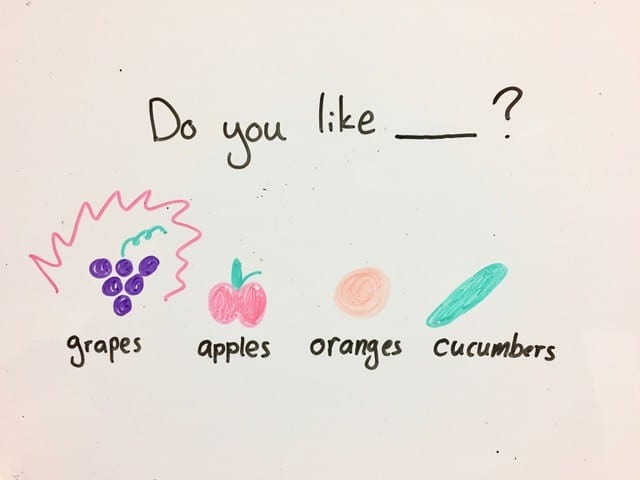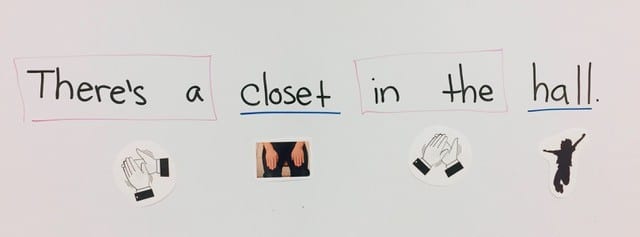Young learners love ESL games because they are engaging and motivating. Having fun, however, doesn’t mean the activity is effective for the lesson.
When are ESL games appropriate? ESL teachers need to consider whether the game is potentially effective at developing the language skills they are targeting in their lesson objectives. As language teachers, we often make the false assumption that the task (or game in this case) we plan will translate neatly into targeted language use and practice in the classroom. Second language classroom research shows that this is not usually the case – that the language actually used by the students during a task can be much different than the language that was anticipated by the teacher.
As well, ESL teachers need to weigh the costs and benefits of bringing games to the classroom. In intensive language programs, instructional time is at a premium. Games that require complex explanations or elaborate classroom preparation can quickly eat up valuable class time. On the other hand, in programs where learners are simply looking for exposure to language and conversational opportunities, ESL games can be an excellent way to motivate learners and keep them interested in the class.
Get certified to teach English to adults and young learners with the 168-hour Hybrid TEFL Certificate course (35% OFF). Study TESOL / TEFL online with OnTESOL and get certified to teach worldwide!
Communicative Low-Prep ESL Games for Young Learners
Vocabulary Game: Definitions
Definitions is a fun ESL game for learners to review and recycle vocabulary. It is simple to set up, works great with large classes, can be adapted to suit different levels and exploited in numerous ways. This low-prep ESL game also allows learners to practice their speaking and listening skills as it requires them to explain terms in English so that their team or partner can identify the vocabulary.
In this vocabulary game, it is essential that learners only use spoken English when explaining the term. They cannot act or draw the term because the main objective of this activity is to get learners to speak and listen. It is also important that ESL teachers ensure that turn-taking is happening so that each member has an opportunity to speak.
The first time learners do this activity, they will need the instructions explained or modeled. For beginner levels, you could take a term like ‘apple’ and give them different ways to identify the term:
- It is a fruit.
- It is round and the size of your hand.
- It begins with a vowel.
- It has a stem and small seeds in the center.
- It is crispy and often in a pie.
- It is red or green.
- McDonalds has an ___________ pie.
- It has the skin you eat.
- You do not eat the stem and seeds.
- An _____________ a day keeps the doctor away.
For intermediate level groups, the vocabulary will be more challenging and will include different parts of speech.
This activity can be carried out with only a chalkboard and requires no preparation time. Arrange groups so that one member has his/her back to the board. The members facing the board must then take turns to explain the term until one person guesses it.
With a little more preparation time, ESL teachers can create slips of paper with the terms written on them, enough for as many teams as necessary with no more than 4 or 5 students in order for a group to maximize participation. The teams can then compete to try to see which team can successfully identify all of the terms.
Memory Pairs Game for Pronunciation, Vocabulary, and Grammar Lessons
Memory Pairs is usually played with a regular deck of cards. All of the cards are laid out in front of the players, and they take turns to turn over two cards to try to find a matching pair. Players keep the pairs they correctly identify, and the winner is the one with the most matching pairs once all the cards have been matched.
This ESL game can be adapted and exploited in innumerable ways for different linguistic purposes. It can also be adapted for different levels with additional instructions.
Pronunciation:
For Beginner pronunciation class, players can find matching phonemes or homophones and rhyming words; for example, bird-word and seat-heat. For intermediate levels and above, players might work on syllable stress patterns in longer words. They might first work on two-syllable words and match if the words have stress on the first or second syllable: open-picture, delay- refuse.
Vocabulary Review or Recycling:
Memory Pairs can be used for vocabulary practice such as identifying synonyms, antonyms, adjective-noun combinations, phrasal verbs, collocations, idioms or matching sentence halves. The game can be adapted to different levels within a class, so they must not only match a pair but also use the vocabulary in a sentence and with correct pronunciation to show they understand the meaning. Example: (take off) The boy took off his coat when he went inside. The plane took off on time
Grammar Review:
Memory Pairs works well to review parts of speech or verb forms for Beginners levels; for example, with parts of speech, learners might review different types of nouns and need to match common nouns, proper nouns, and abstract nouns: table – eraser, Mr. Smith – Australia, information-beauty.
For verb forms, beginners can match base verb forms to simple past forms or have them turn over three cards to try to find base form, simple past and past participle: go -went- gone, try-tried-tried, see-saw-seen. They might also review how the verb ‘be’ conjugates; for example, they must match according to subject-verb agreement and the cards could be divided with a subject on one side and the verb form on the other side they must match: John – is playing, They – were at school.
For intermediate levels, learners might have to match a verb with either a gerund or infinitive: He likes – playing football/playing football. Sally needs – to go home.
Other Popular Vocabulary Games
Tic-Tac-Toe is a fun ESL game for learning new vocabulary. The class can be split into two groups and students can score an X or an O on the spot where a particular word appears on the grid IF they are able to provide the definition of the word and/or an example using the new word correctly.
Crossword puzzles are an all-time favourite game to review vocabulary. It is important to try and use examples, and not just definitions, in the ‘hints’ section of the puzzle so that students can develop their knowledge of how to use the words as well as what they mean.
Backup ESL Games for Young Learners
If there’s one thing to be learned in TESOL, it is that no matter how thoroughly you plan, the unexpected will always occur. In addition, it could be that the homeroom teacher asks for a last-minute lesson extension. Perhaps your boss forgot to mention the 8:00 am kindergarten class. It could be that your planned lesson took half the time you expected. Or, you could’ve just forgotten your flashcards on your desk. Stressful as this is, it’s much less so if you have a few ESL games in your back pocket to pull out at a moment’s notice – no prep required.
Fruit Shoot
This ESL game is a more dynamic variation of “categories” that works very well with young beginner ESL learners. It is easily scalable based on class level.
In a very young or very beginner class, use this game to drill individual vocabulary words. The teacher says the target language followed by the name of a student, for example, “An apple – Aria.” Now, Aria must say the vocabulary word and point to a third student, “An apple – Riko.” Once the student says the word and name, they sit down until all the students have had a turn. Students win the game if they are all sitting. If someone makes a mistake, students repeat the activity from the beginning.
For stronger classes, use this game as a plural/counting exercise: “One apple – Aria.” “Two apples – Riko” “Three apples – Karen” “Four apples – Yuki,” etc. And for older young students, the game can be played as a category variation, with students naming objects in a specific category. For example, “Apple – Aria.” “Banana – Riko” “Pear – Karen” “Peach – Yuki.” If a student falters or repeats, a new category is chosen.
Potato Bug
This is a sentence building activity to drill longer grammatical structures. Students sit in a circle and take turns saying a single word of the target grammar. For instance, if the target language is, “The cat is on the pumpkin” then the first student in the circle would start with “The”. Then, the second student would say “cat,” and the third student would say “is,” and so on.
If any student falters or makes an error, all the students yell “potato bug!” and roll onto their backs wigging their arms and legs in the air like upturned woodlice. This activity is particularly good with grammar patterns that include many small function words.
Rhythm Drilling
This is a very simple repetitive drill that is particularly useful for very beginner or very young learners who lack confidence in speaking. However, you can use this activity to help stronger students develop a sense of the language rhythm, syllables, and stress.
Think of a few rhythmic motions that fit into the grammar pattern. For example, in the sentence “There’s a cockroach in the kitchen,” You can slap your thighs for there’s a and in the, clap your hands for cockroach, and tap your shoulders for kitchen. By adding an element of complex movement into the sentence, the students will be more engaged and focused on the activity. In addition, they are more willing to continue repeating until they have mastered both the movements and the words.
You can then speed it up, to give students practice producing language at a more natural speed. And, as you move into substitutions, you can keep certain elements of the physical motions as prompts for the students.







